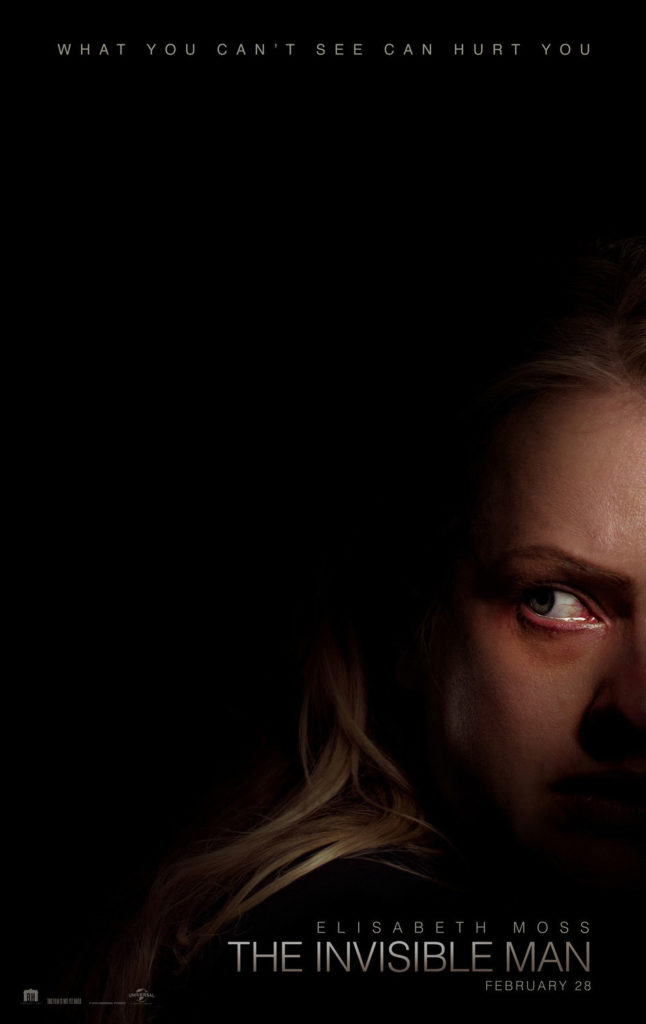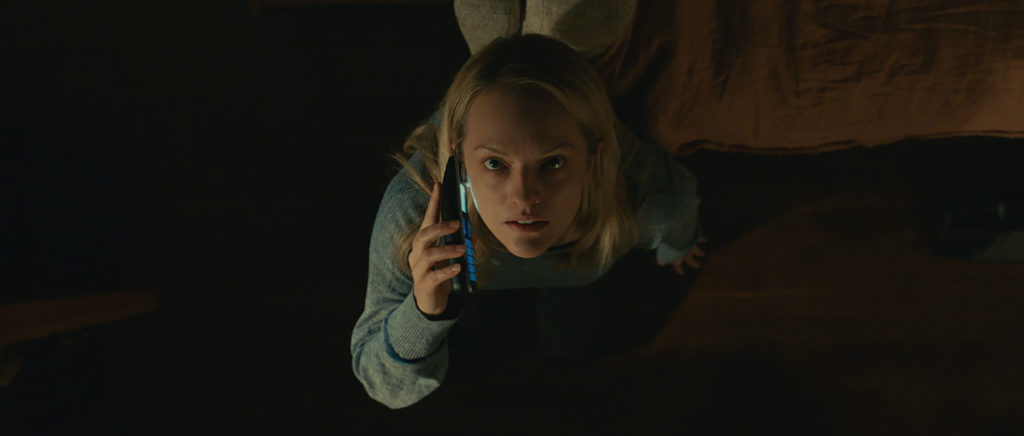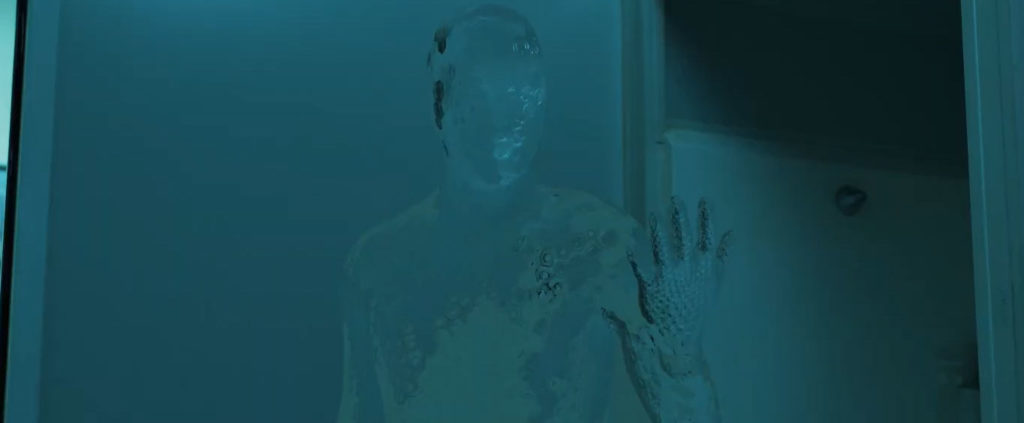
Director: Leigh Whannell
Writer: Leigh Whannell, H.G. Wells (source novel, uncredited)
Cast: Elisabeth Moss, Aldis Hodge, Harriet Dyer, Oliver Jackson-Cohen, Michael Dorman
Producers: Jason Blum, Kylie Du Fresne
Music: Benjamin Wallfisch
Cinematography: Stefan Duscio
Editor: Andy Canny
Cert: 15
Running time: 124mins
Year: 2020

What’s the story: When Cecilia (Moss) escapes abusive boyfriend Adrian Griffin (Jackson-Cohen), she believes the worst is behind her. But, as odd and unsettling occurrences mount, Cecilia begins to think Griffin may still be close by.

What’s the verdict: Leigh Whannell’s adaptation of H.G. Wells’ irresistibly premised 1897 source novel is a case of “interesting subtext, shame about the telling”.
Not that we’re complaining about Wells’ novel being jettisoned bar that tantalising title and character name Griffin. Even here when the Father of Science Fiction does not receive so much as a namecheck. Previous movie and TV adaptations have spun their stories into different areas, and Whannell’s take is as much Gaslight as The Invisible Man.
But, by focussing on an abusive relationship, Whannell’s movie loses the glee of the central character’s violent, anarchic spree that has seen the story’s appeal endure over one-hundred-years. The muted colour tones employed throughout further weigh the whole thing down.
Not that we can’t see what Whannell is trying to say. In these days of gender equality labelling, this crucially must remain the invisible “man”; the film’s premise based on the power society gives men over women that goes largely unseen.

So, it comes as a shock to Cecilia’s lawyer sister Emily (Dyer) and cop friend James (Hodge) that she has endured Griffin’s cruelty for so long. And even when seemingly free of him, Griffin’s control within legal boundaries continues alongside the criminal abuse. All of which feeds into the film as a meta-reading of Hollywood’s dark past only recently made visible.
Moss is on typical premium form as a woman certain she’s not losing her mind, while evidence indicates otherwise. Kass and Hodge do something with roles that predictably see them arc from sympathetic concern to hostile resentment when Cecilia seems to be screwing with them. Michael Dorman is also more nuanced than could be expected in a small role as Griffin’s lawyer brother (every sibling is a lawyer in Whannell’s world).
But, by going sombre and “realistic” (including in how the invisibility is achieved), Whannell sacrifices the perverse appeal of the character. Everyone can feel an illicit thrill at the idea of walking around undetected, but imagining yourself using the ability to beat women? Not so much.

This subdued tone neuters much of the suspense and the chunky two-hour runtime could stand pruning. Although Whannell does make good use of wide, empty corners in hushed rooms to plug the audience into Cecilia’s escalating paranoia.
Invisible effects are sprinkled throughout rather than showboated, presumably because in this CGI age we no longer wonder how they made a man invisible. For that awe, go back to James Whale’s 1933 original version, particularly the scene where a pair of pyjamas goes to bed. Now that’s magic.
And, after the bigger Blumhouse productions of recent years, this returns to the company’s roots, keeping the action largely restricted to interiors or isolated locations. Maybe it was because New South Wales couldn’t double for San Francisco when looked at up close. But again, part of this story’s appeal is the titular “Where’s-He-Gone?” interacting with an unsuspecting public, so it’s a shame that is all but absent. Funnily enough, the same mistake was made twenty years ago in Hollow Man.
But, boffo box office means this is another Blumhouse hit and we’re likely to see at least one sequel. How about they go full-on action and give Moss a superhero franchise?
Rob Daniel
Twitter: rob_a_Daniel
iTunes Podcast: The Movie Robcast

Pingback: 64th London Film Festival - Check out our 10 Must-See Movies
Pingback: Elisabeth Moss is on career best form in Josephine Decker's Shirley
Pingback: Farnoosh Samadi's 180° Rule paints a grim life of a woman's life in Iran
Pingback: Insidious: In praise of Leigh Whannell and James Wan's perfect jump scare
Pingback: Ready Player Gun - The Hunt and the most influential movie ever made?